My neighbor’s ginkgo tree (Ginkgo biloba) is coloring up again, bright yellow now, headed for screaming saffron. I don’t know why it still surprises me, this always welcome yet somehow unnerving contrast against the dark green coast live oaks and bays that dominate my garden. This ginkgo was planted more than thirty years and three neighbors ago and its fall transformation still takes me by surprise.
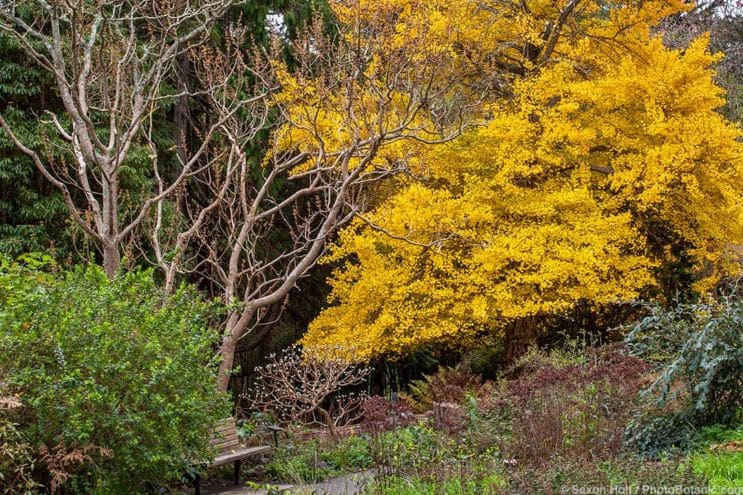
Fall colors of Ginkgo biloba in the San Francisco Botanical Garden
Usually planted for its stunning fall color, Ginkgo biloba is attractive and interesting at any time of year. Long-lived and slow growing, trees can eventually reach 60-80 feet tall or more. Branching is often irregular, with some branches upright and others wide-spreading or oddly angular. Growth habit tends to vary as trees mature.
The somewhat leathery or waxy leaves are distinctively fan-shaped, sometimes ruffled or scalloped, often notched or bifurcated, and pale to dark green in spring and summer. Leaves are wide and petioles are long, causing them to flutter in the slightest breeze. In fall, as if on cue, the leaves turn yellow and then drop suddenly over several days, creating a deep, dense blanket of gold beneath the tree.
Ginkgos are cone-bearing gymnosperms, along with conifers and cycads. The fossil record of genus Ginkgo goes back 200 million years or more, when various ginkgo species evidently were widespread throughout much of the world. Believed to be native to eastern China and cultivated there since ancient times, G. biloba is likely now extinct in the wild. Its offspring are the only living representatives of its taxonomic class, order, family, genus, and species.
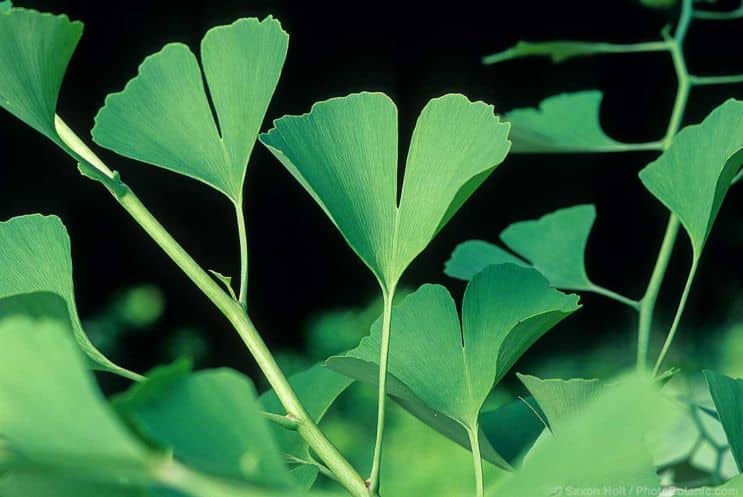
Spring and summer leaves of Ginkgo biloba
With only one species to work with it may be surprising how many cultivated varieties have been developed. A search for “ginkgo” in the American Conifer Society database brings up more than 100 entries. Online sources and specialty nurseries offer dozens of cultivars. Most, but not all, are male trees. The fruitlike seeds of female trees are both messy and foul-smelling when they split open upon falling to the ground.
Choices for the gardener or landscape designer range from broadly pyramidal to narrowly upright to horizontal and from large to mid-sized to genuinely dwarf. If ultimate size or shape is critical, buyers should know that descriptions of many cultivars are tentative. Slow growth, lack of official documentation, and limited experience with newer varieties mean that a plant may not develop as expected over time. It is probably best to stick with older and better known cultivars unless you have the freedom and flexibility to experiment.
Autumn Gold, 40-60 feet tall and 25-30 feet wide, is the trademarked name of a mid-sized male cultivar with an upright, broadly pyramidal habit at maturity. ‘Akebono’ is similar but more oval in form. ‘Princeton Sentry’ is narrower and more assertively upright. ‘Golden Globe’ is full, broad, and almost perfectly round. These and other mid- to full-sized varieties share the species’ tolerance of adverse environmental conditions and are often used as street trees or in urban parks and commercial landscapes.
Some of the most interesting choices for gardeners and collectors are found among the many dwarf and semi-dwarf cultivars. ‘Jade Butterfly’ is about ten feet tall with dark green, deeply divided and scalloped leaves densely set on a vase-shaped to rounded shrub. ‘Chris’s Dwarf’ (‘Munchkin’) bears the smallest leaves of any ginkgo on a shrub that may reach 3 feet tall in ten years; it makes a good rock garden or container plant and is often used in bonsai. ‘Chase Manhattan’ and ‘Mariken’ are other dwarf shrubs with miniature leaves.
Whatever variety or varieties you select, try to provide a location with full sun, good drainage, and moderate to regular water until established. Ginkos in general are otherwise highly adaptable to a wide range of soils and watering regimes.
By the way, I’ve discovered that one cure for the dissonant effect of a single ginkgo in a sea of green is to plant the dazzlingly colorful ‘Roger’s Red’ grapevine on my side of the fence. It’s likely that planting more ginkgos would have a similar effect.


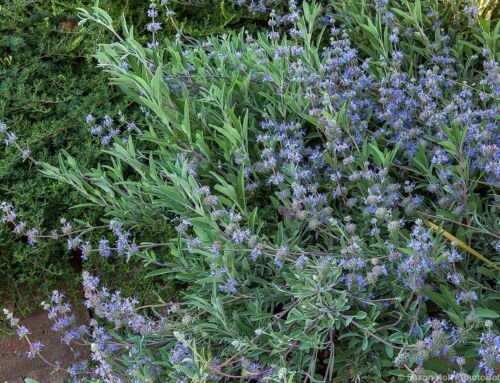
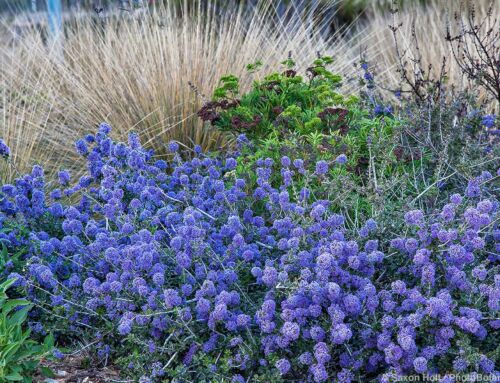
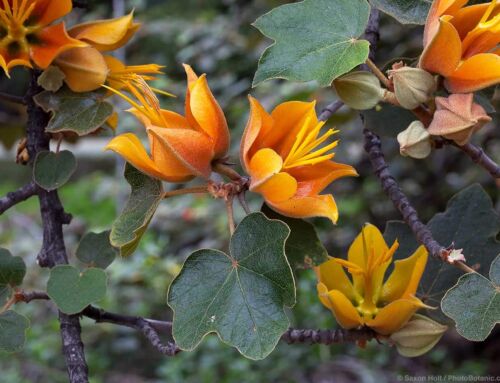
Gingko trees may be beautiful but they support exactly zero native insects and pollinators. Please can we promote the plants that provide biodiversity.
Hi Laura – Thanks for the input. Indeed, Gingko offer almost no ecosystem services but are great as street trees in urban environments with the consequent pollution and compacted soils where, perhaps, the shade and photosynthesis offer a different value. If you follow us regularly you know we promote natives and habitat plants quite often.
Hi Laura,
Thanks for your comment. It’s true that promoting and protecting biodiversity is THE number-one goal of landscaping, both public and private, in these critical times.
But there are other important purposes for gardens, and most of us might agree that one of these is pure joy.
If your garden is designed primarily to support wildlife, store carbon, conserve water and other resources, and if you do not plant invasives, blow the soil, use pesticides, or otherwise disturb the natural state of the land, surely you cannot be faulted for planting something that simply gives you joy.
Nora